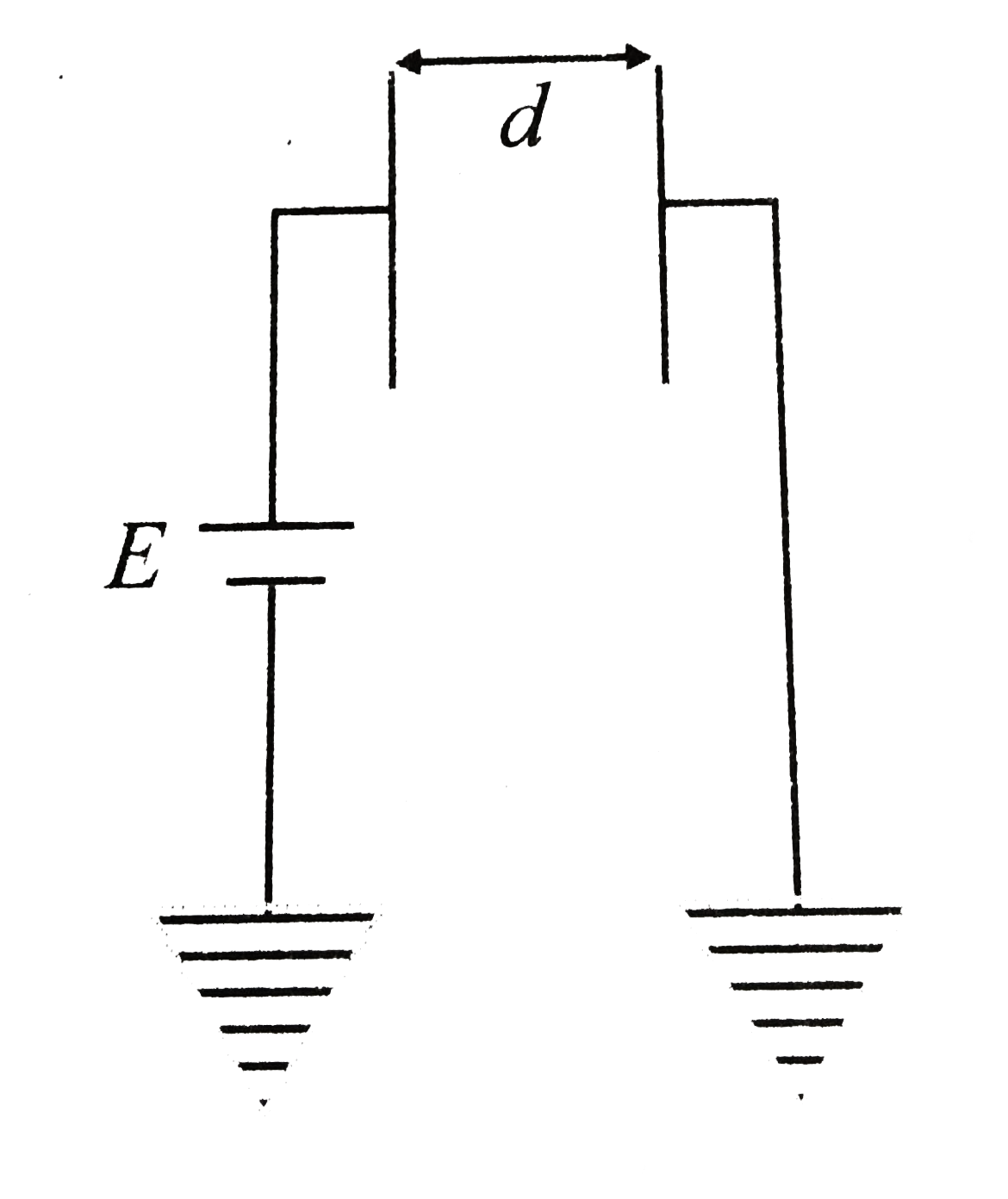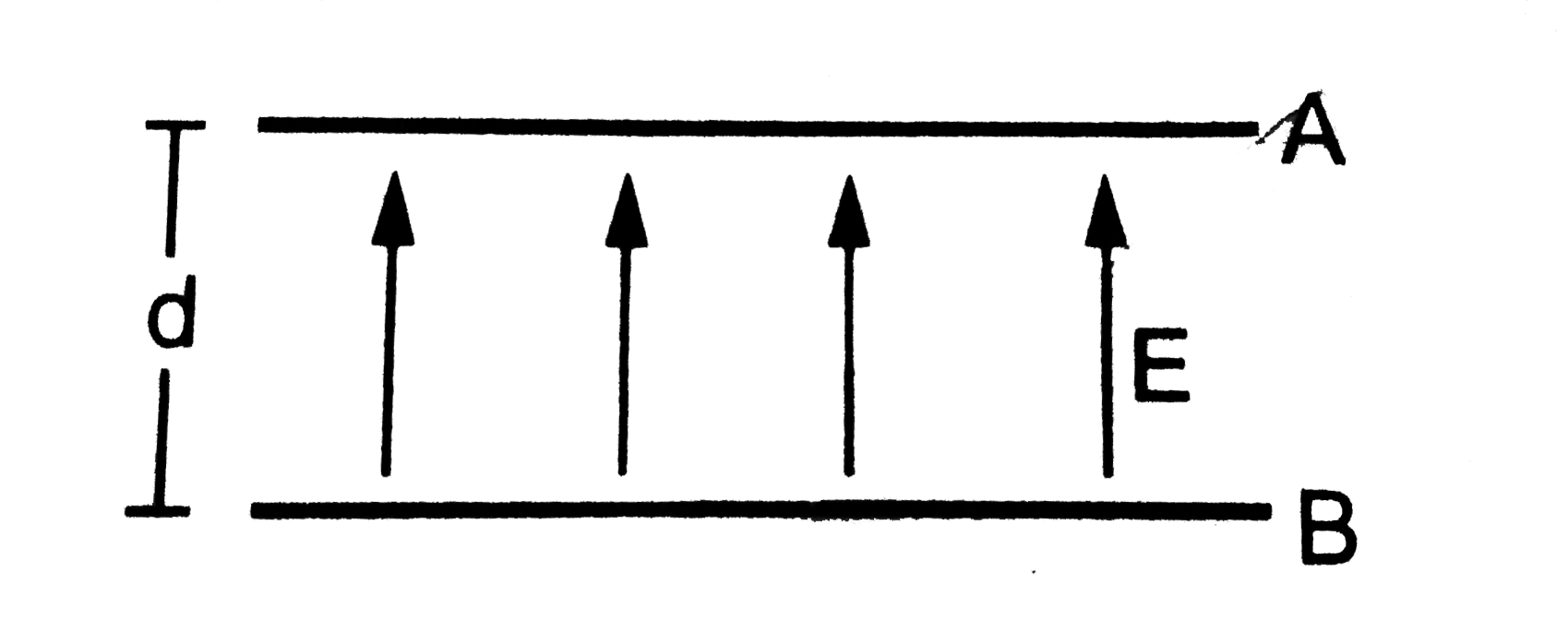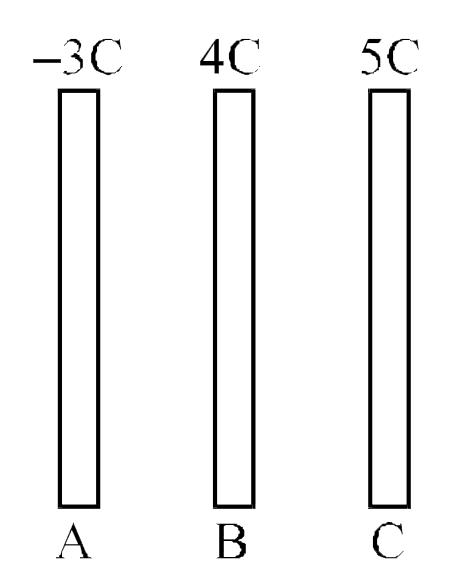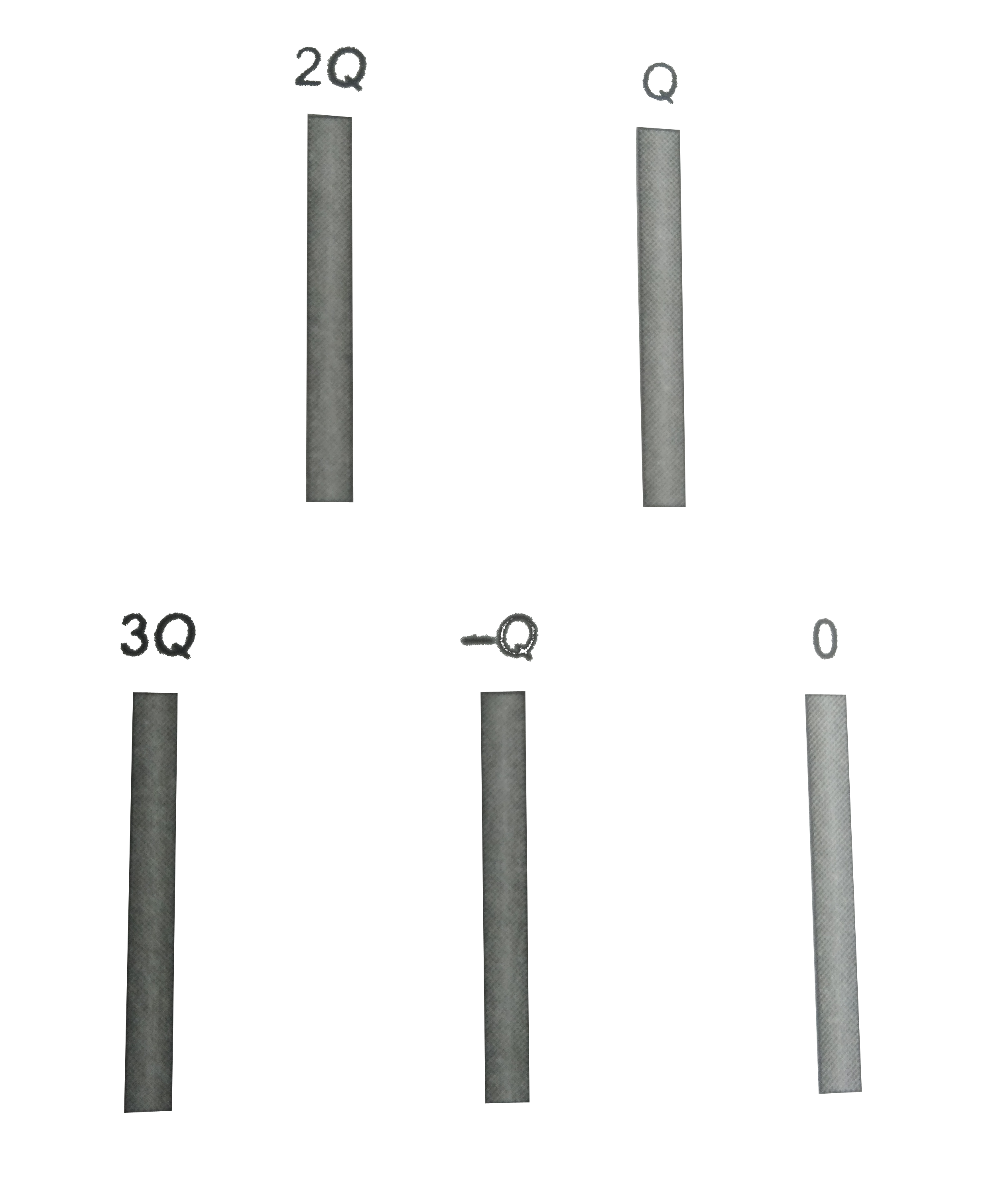Two metallic plates AandB , each of area 5×10m are placed parallel to each other at a separation of 1 cm . Plate B carries a positive charge of 33.7 pc . A monochromatic beam of light, with photons of energy 5 eV each, starts falling on plate A at t = 0, so that 10 photons fall on it per square meter per second. Assume that one photoelectron is emitted for every 10 incident photons. Also assume that all the emitted photoelectrons are collected by plate B and the work function of plate A remains constant at the value 2 eV . Electric field between the plates at the end of 10 seconds is
2×103N/C
103×N/C
5×103N/C
Zero
The correct Answer is:A
No. of photoelectron emitted
=(No. of photon/unit area/unit time)×(Area×time)106
=1016×5×10−4×10106=5×107
qA=ne=5×107×1.6×10−19=8×10−12C
qB=33.7−8=25.7pC=25.7×10−12C
Electric field
E=qB−qA2ε0A=(25.7−8)×10−122×8.85×10−12×5×10−4
=2×104N/C
Similar Questions
Two metalic plates A and b has the same area of 5×10−4m2 are placed parallel to each other at a distance of 1 cm. Plate B carrins a positive charge of 33.7×10−12C. A monochromatic beam of light, with photons of energy 5eV each, starts falling on plate A at t=0 so that 1016 photons fell on it per square metre per second. Assume that one photoelectron is being emitted for every 106 incident photons. Assuming that all the emitted photoelectrons are collected by plate b and th work function of plat A remains constant at the value 2 eV, the numbeer of photoelectrons emitted up to t=10 s is n×106. Find the value of n.
Negleect the time taken by the photoelectron to reach plate B.
(Take ε0=8.85×10−12C2N−m2)
View SolutionTwo metallic plate A and B , each of area 5×10−4m2, are placed parallel to each at a separation of 1cm plate B carries a positive charge of 33.7×10−12C A monocharonatic beam of light , with photoes of energy 5eV each , starts falling on plate A at t=0 so that 1016 photons fall on it per sqare mater for every 106 incident photons fall on it per square meter per second Assume that one photoelectron is emitted for every 106 incident photons . Also assume that all the emitted photoelectron are collected by plate B and the work function of plate A remain constant at the value 2eV Determine
(a) the number of photoelectrons emitted up to i=10s,
(b) the magnitude of the electron field between the plate A and B at i=10s,and
(c ) the kinetic energy of the most energotic photoelectrons emitted at i=10s whenit reaches plate B
Negilect the time taken by the photoelectrons to reach plate BTakeε0=8.85×10−12C2N−m2)
View Solution
Knowledge Check
Two plates, each of area A, are placed parallel to each other at a distance d. One plate is connected to a battery of emf E and its negative is earthed. The other plate is also earthed. The charge drawn by plate is
 A2ε0AEdBε0AEdCε0AE2dD3ε0AEd
A2ε0AEdBε0AEdCε0AE2dD3ε0AEdAt t=O, light of intensity 1012 photons/s−m2 of energy 6eV per photon starts falling on a plate with work founction 2.5eV If area of the plate is 2×10−4m2 and for every 105 photons one photoelectron is emitted, charge on the plate at t=25 s is
A8×10−15CB4×10−14CC12×10−10CD16×10−12CPhotons of energy 2.0eV fall on a metal plate and release photoelectrons with a maximum velocity V. By decreasing λ and 25% the maximum velocity of photoelectrons is doubled. The work function of the metal of the material plate in eV is nearly
A2.22B1.985C2.35D1.80
Two large metal plates each of area 1m2 are placed facing each other at a distance of 5 cm and carry equal and opposite charges on their faces. If the electric filed between the plates is 1000NC−1, find the charge on each plate.
View Solutionshows two metallic plates A and B placed
. parallel to each other at a separaton d. A uniform
. electric field E exists between the plates in the direction
. from plate B to plate A. Find the potential difference
. between the plates.

View SolutionThree large plates A, B and C are placed parallel to each other and charges are given as shown. The charge that appears on the left surface of plate B is

View SolutionCalculate capacitance of a parallel plate capacitor with area of each plate 1 cm2 and separation 1 mm.
View SolutionSome isolated metal plates with large surface areas are kept parallel to each other and total charges on each plate are as shown. Find the charge appearing on the surfaces of plates.
(a)
View Solution
